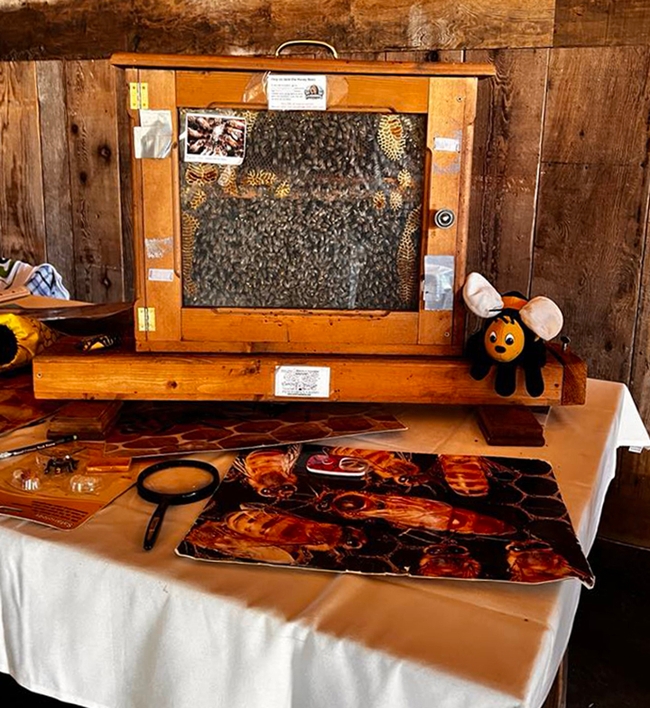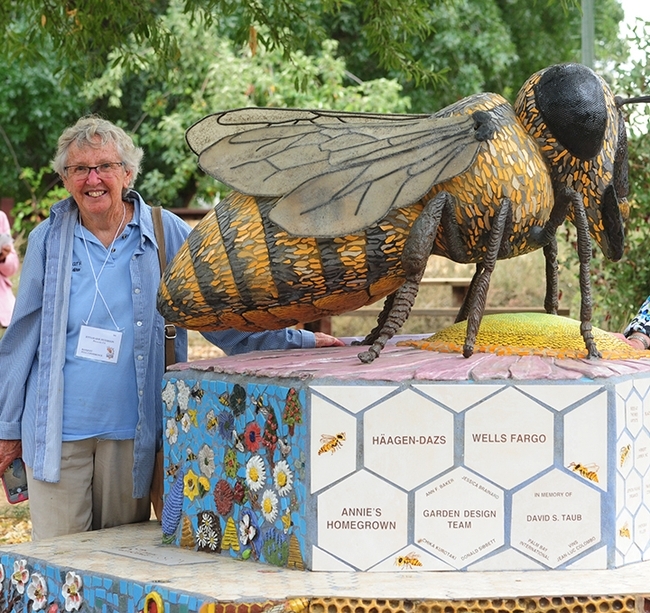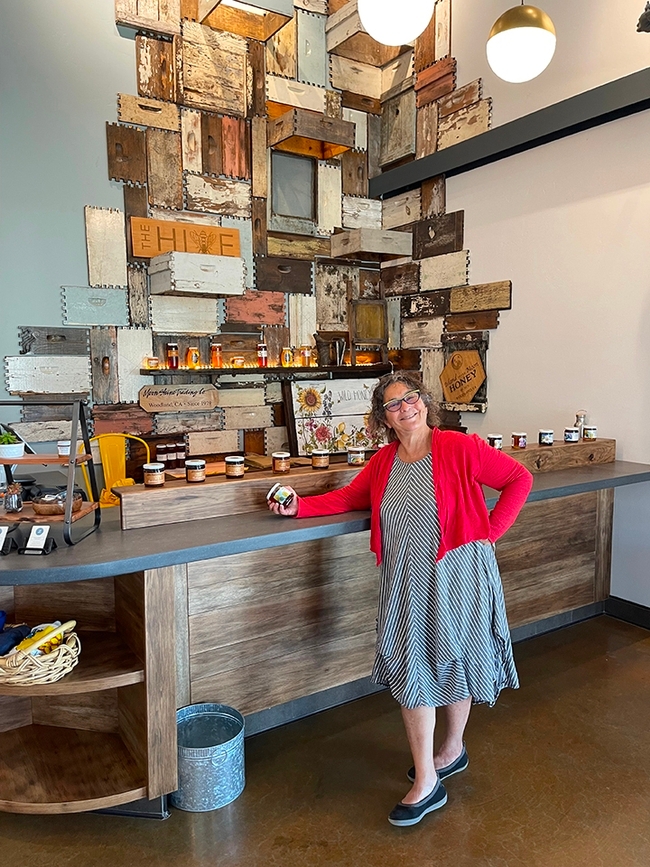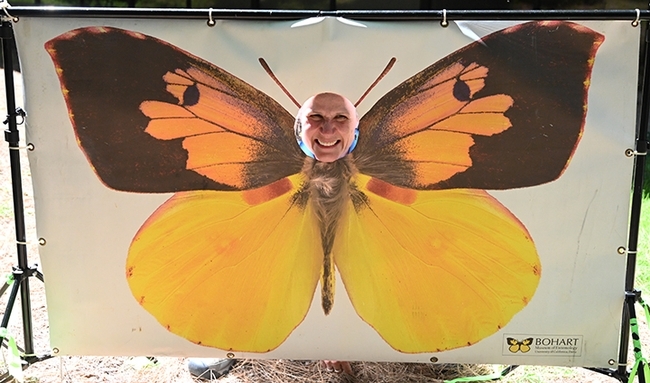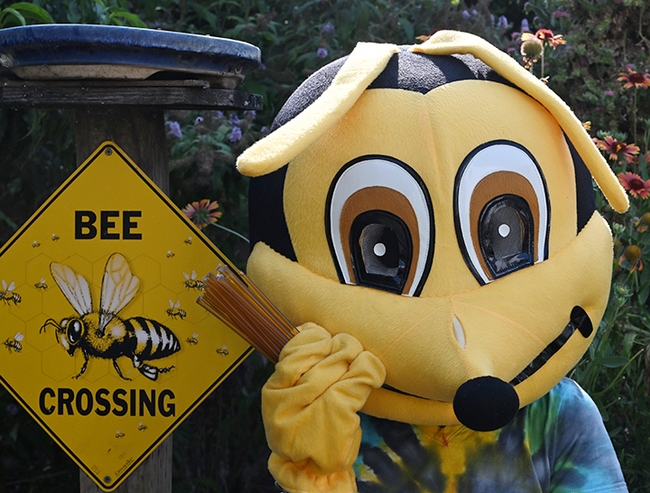- Author: Kathy Keatley Garvey
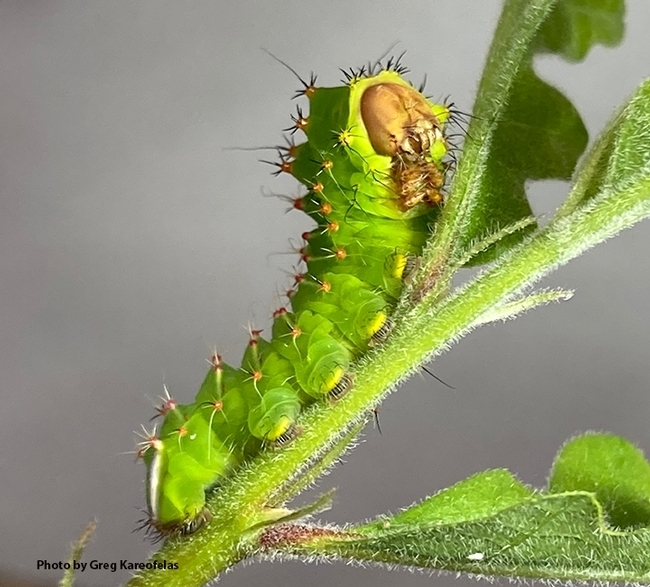
Those attending the Bohart Museum of Entomology's recent Moth Night learned all about silkworms, moths, cocoons and textiles at a display staffed by Michael "Mike" Pitcairn, a retired senior environmental scientist/supervisor with the California Department of Food and Agriculture.
Mulberry silk production originated in China at least 5000 years ago. Folklore indicates that the wife of a Chinese emperor watched a cocoon fall from a mulberry tree into her teacup. She reportedly watched the cocoon unravel, revealing a long delicate thread. She collected thousands of the threads and made a robe for the emperor.
Biology Professor Richard Peigler of University of the Incarnate Word, San Antonio, donated the items to the Bohart Museum in 2020, said UC Davis Distinguished Professor Emerita Lynn Kimsey, former director of the Bohart. "What's cool about it is," she said, "is that the silk pieces were made from silk produced by multiple silk moth species, not just the one we think of commercially."
The mulberry moth is the primary producer of silk. Tussah is the most well known of the wild silks.
Peigler has worked extensively with wild silk moths, studying their phylogeny, taxonomy and biology. His donations comprise the Wild Silks collection at the McGuire Center for Lepidoptera and Biodiversity, Florida Museum of Natural History, University of Florida.
"Wild silk is not nearly as luxurious as domestic silk found in today's clothing industry," the McGuire Center website relates. "This is raw, rough, and textured silk which feels almost paper-like to the human touch. This silk is harvested from the cocoons of various silk moths that encounter little to no human interaction. The practice of producing silk – termed sericulture, stretches back 5 millennia, and astonishingly, is a craft performed to this very day."
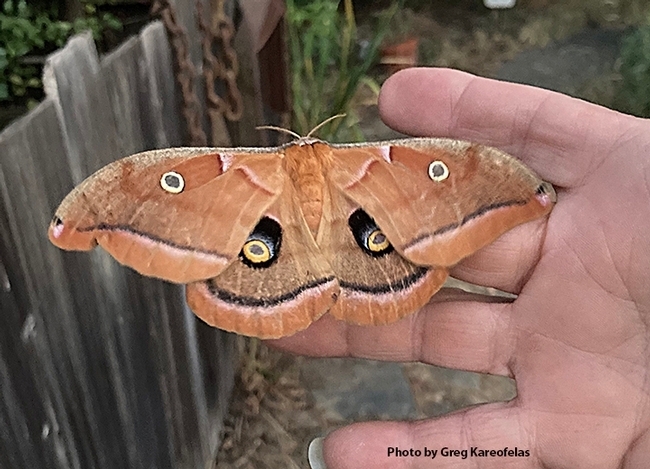
They included a woman's chaddar (head covering and shawl) and tablecloths.
Eri Silk (Samia ricini). Displayed was a woman's chaddar of 100 percent eri silk (Samia ricini), handwoven in Assam, India, and of naturally colored yarn. The brocade was done in traditional Assamese motifs. Women in rural villages in Northeast India wear these traditional shawls in winter. Peigler bought the chaddar for $47 from a seller in India in 2019.
Tussah Silk (Antheraea pernyi). Displayed was an antique tablecloth of tussah silk, handwoven in China in the 1920s or 1930s. The tablecloth, hand-reeled and in the natural beige color, is hand-embroidered with mulberry silk (Bombx mori). China has exported thousands of tablecloths and handkerchiefs made of tussah silk (called "pongee" or "Shantng silk") to the United States and the United Kingdom. Peigler purchased this tablecloth in April 2019 from an internet seller in Mount Dora, Fla., for $35.
Also of interest was a sample of tussah silk fabric in a pattern called "Honeycomb," mimicking the hexagonal cells in a bee colony. "The yarns were machine spun and the fabric was machine woven," said Peigler, who purchased the fabric from Oriental Silk Import Co. in Los Angeles for $32.95 per yard. There are several species of tussah silk moths (family Saturniidae) in China, India, Japan, Africa and North America.
Mulberry Silk (Bombx mori). Displayed was a tablecloth created in the early 1900s in China. "It was spun, woven and embroidered by hand," Peigler related.
The Bohart Museum, founded in 1946, is located in Room 1124 of the Academic Surge Building, 455 Crocker Lane, UC Davis campus. It also includes a live petting zoo and an insect-themed gift shop. Director of the museum is Professor Jason Bond, the Evert and Marion Schlinger Endowed Chair of UC Davis Department of Entomology and Nematology, and associate dean, Agricultural Sciences, UC Davis College of Agricultural and Environmental Sciences.
The Bohart Museum is open to walk-in visitors on Tuesdays from 9 a.m. to noon and from 1 to 4:30 p.m. through Aug. 27. It will be closed to the public Sept. 1-22.
The next open house is set for 1 to 4 p.m., Saturday, Sept. 28. The theme is "Museum ABC's: Arthropods, Bohart and Collecting." All open houses are free and family friendly. Parking is also free. For more information, contact bmuseum@ucdavis.edu or access the website at https://bohart.ucdavis.edu.
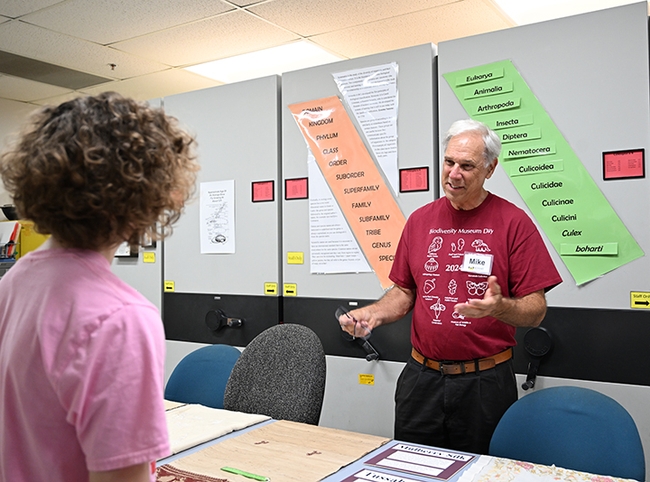
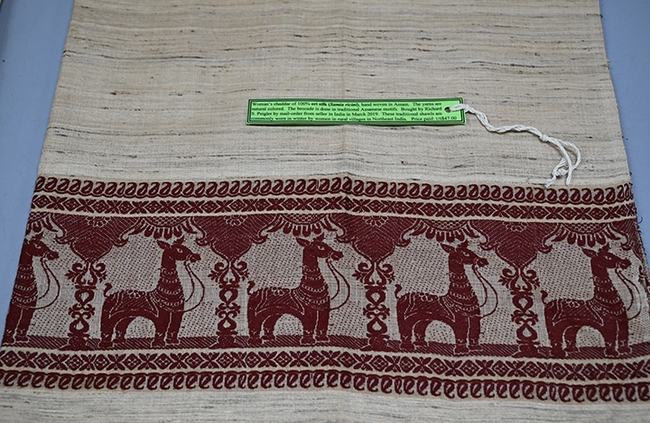
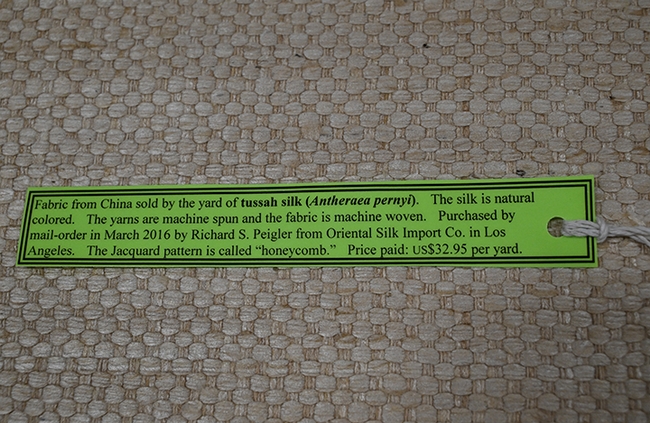
- Author: Kathy Keatley Garvey
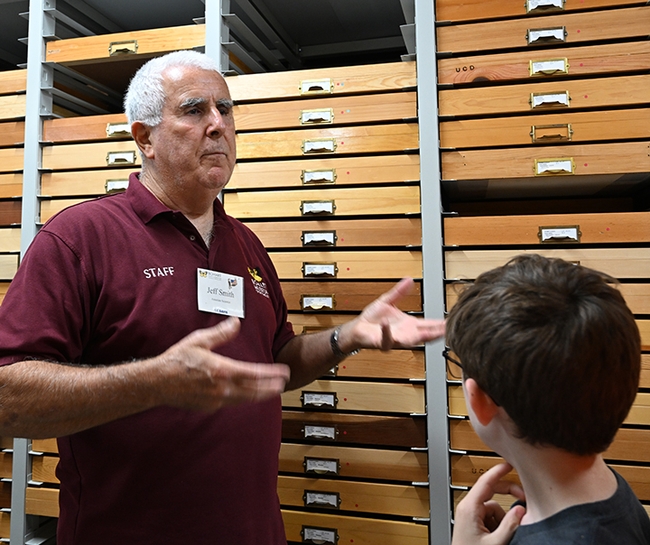
Meanwhile, here's another look at the Bohart Museum of Entomology's 2024 Moth Night, which drew widespread interest.
No one knows exactly how many moth events took place across the nation during National Moth Week, just as no one can predict how many species of moths and other night-flying insects will come to your porch light at night, or to your blacklighting display (UV light illuminating a hanging white sheet).
"Scientists estimate there are at minimum 150,000 moth species, and some believe that there could be over 500,000! Moths have been found that are small as a pinhead and as large as an adult-human's hand," according to NationalToday.com. "But of course, it's the incredibly complicated wing colors and patterns that make them especially dazzling."
A New Jersey non-profit organization, Friends of the East Brunswick Environmental Commission, launched the national event in 2012. The organization is dedicated to the conservation and promotion of the local environment.
The Bohart Museum's global collection of 8 million insects includes some 825,454 specimens of moths and butterflies, including 618,750 moths, ranging in size from the huge Atlas moths (10-inch wingspan) to the extremely tiny (4 mm wingspan) leafminer moths, says Jeff Smith, curator of the Lepidoptera collection. He and Bohart associate Greg Kareofelas showed dozens of moth specimens and answered questions.
What moths were drawn to the blacklighting display? (See list on Bug Squad blog). Retired UC Davis staff associate John "Moth Man" De Benedictus and his colleagues set up the blacklighting display. UC Davis doctoral student Iris Quayle fielded questions about the differences between moths and butterflies (See Bug Squad blog).
In today's blog, we share images of
- Moth-er Volkmar Heinrich, UC Davis associate professor of biomedical engineering
- Moth-ers UC Davis doctoral candidate Peter Coggan and his father, Pete Coggan of Minnesota (See Bug Squad blog)
- UC Davis student Kaitai Liu who showed stick insects and Madagascar hissing cockroaches from the live petting zoo
- UC Davis graduate student Riley Hoffman and fellow Bohart volunteer Barbara Heinsch, who staffed the family arts-and-crafts table.
Light Pollution. The Coggans answered many questions about light pollution. "Most organisms have come to rely on nighttime darkness for knowing when to reproduce, preparing for the winter, and moving around their environment," commented UC Davis doctoral student Peter Coggan. "The Industrial Revolution Artificial Light At Night (ALAN) has become a major conservation issue, disorienting and confusing countless species, often resulting in death. ALAN often kills or displaces organisms like bats, moths, and fireflies, making our nights less bio- diverse and more mosquito filled."
"Not only does it alter animal behavior but ALAN also has been linked to many human health issues like depression, obesity, and cancer," he said. "Although not widely known, ALAN is one of the easiest environmental crises to solve. Raising awareness and getting communities to reduce their light usage can solve the issue overnight and bring back the animals of darkness and the stars back to them."
The Bohart Museum's Moth Night also featured a display of various silk textile and cocoons, donated to the museum by Professor Richard Peigler of the University of the Incarnate Word, San Antonio. Bohart associate Mike Pitcairn, retired senior environmental scientist and supervisor, California Department of Food and Agriculture's Biological Control Program, staffed the table. (See more in upcoming Bug Squad blog.)
The Bohart Museum, founded in 1946, is located in Room 1124 of the Academic Surge Building, 455 Crocker Lane, UC Davis campus. Director of the insect museum is Professor Jason Bond, the Evert and Marion Schlinger Endowed Chair of UC Davis Department of Entomology and Nematology, and associate dean, Agricultural Sciences, UC Davis College of Agricultural and Environmental Sciences.
The open houses are free and family friendly. The next open house is on Saturday, Sept. 28 from 1 to 4 p.m. The theme: "Museum ABC's: Arthropods, Bohart and Collecting." Access the website at https://bohart.ucdavis.edu or email bmuseum@ucdavis.edu for more information.
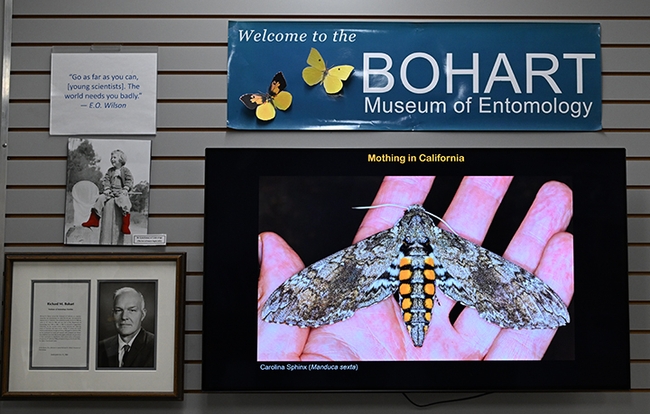
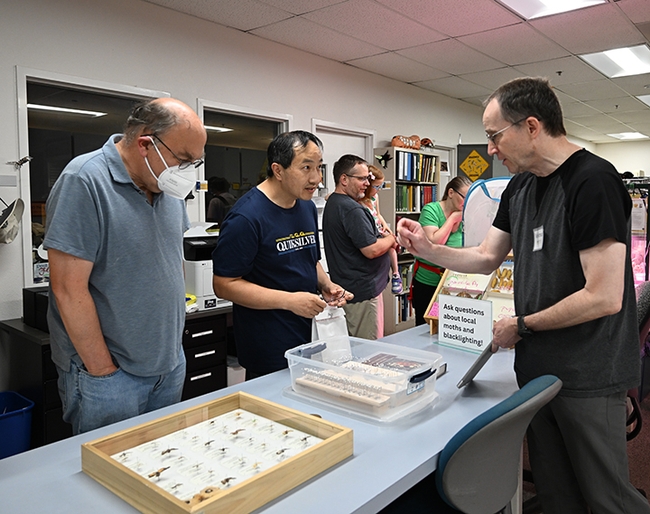
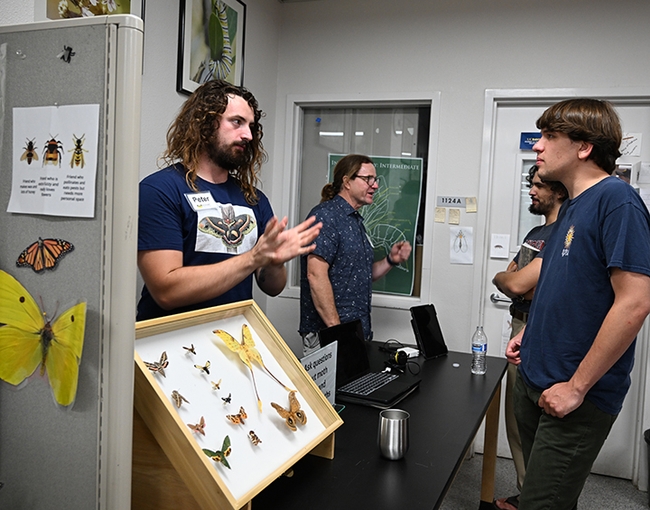
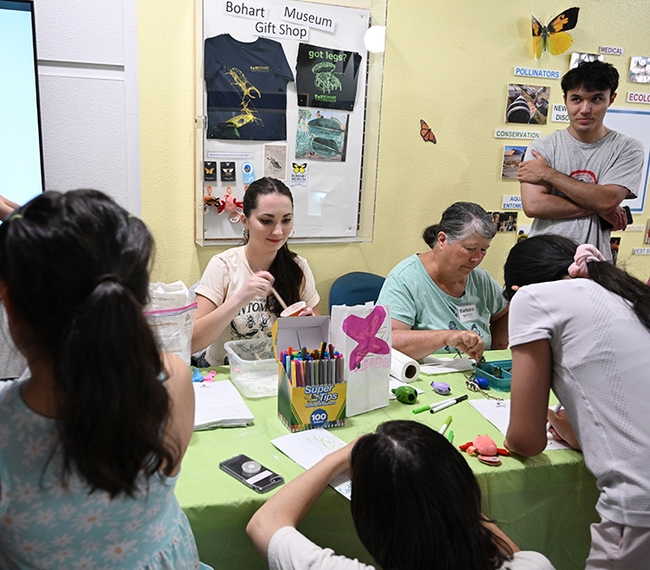
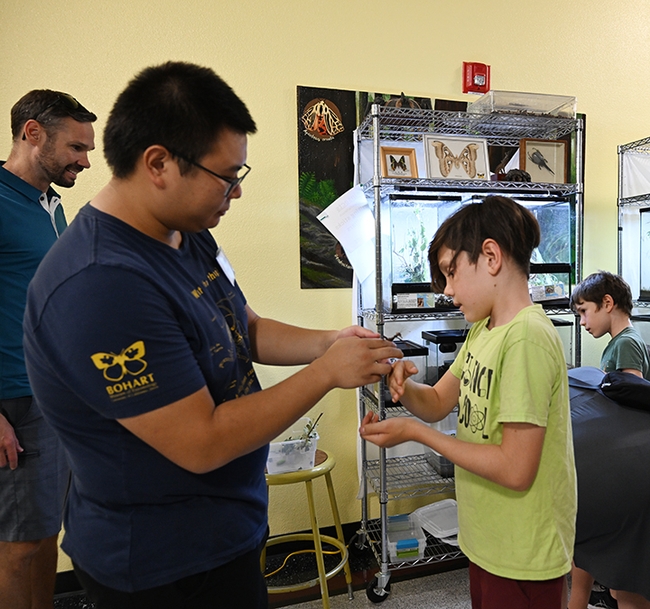
- Author: Kathy Keatley Garvey
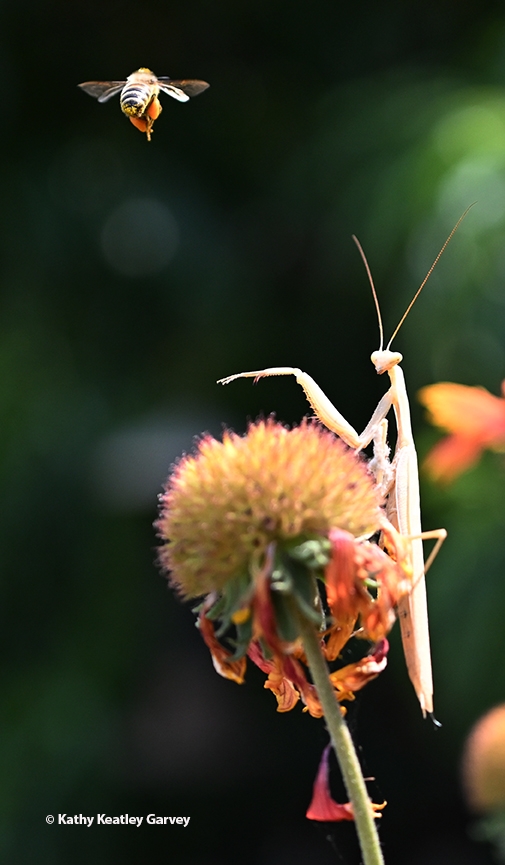
He's a male Mantis religiosa, as slim as a string bean, and scanning his environment.
We're accustomed to seeing see the native Stagmomantis limbata in our garden, and not M. religiosa, the European mantis, which is found throughout Europe, Asia, Africa, and North America.
"Males are often found to be more active and agile, whereas females are physically more powerful," according to Wikipedia. "Adult females are generally too large and heavy for their wings to enable a take-off...The great variation in the coloration of M. religiosa from different shades of yellow, brown, green, and sometimes black has been the cause of numerous hypotheses and studies for over 100 years.However, no generally accepted answer about reason, benefit, or mechanism of the coloration or the change of coloration has been found."
The male is apparently quite good at avoiding sexual cannibalism during mating. Wikipedia says: "Instead of just observing them, sexually mature males approach sexually mature females when they see them, but due to the physical superiority of the females, males of M. religiosa face certain challenges in doing so. When a female spots a male, she is very likely to attack and kill him (see also: Sexual cannibalism). Therefore, males can be observed to be very slow and cautious in their approach; after spotting a female, the male usually freezes and turns his head to look directly at her. Since the foveae in his eyes face directly forwards, he has the most accurate and detailed view of her and can watch every one of her moves. He then proceeds to approach her from behind. Males can be observed to stop as soon as the female turns her head or even moves. Mantids are very good at detecting moving structures, but are almost unable to see immobile objects. Using this ‘stop-and-go' tactic, the male stalks closer to the female. This can often take several hours. Depending on the environment, males sometimes show a light ‘rocking'-behavior which is believed to imitate the leaves of surrounding plants to blend in with the background. Males doing this had no higher probability of being detected and attacked, which supports this hypothesis of concealment."
We asked praying mantis scientist Lohit Garikipati about this European species. He holds a bachelor's degree from UC Davis and a master's degree from Towson University, Md., and is now PhD-bound at the Richard Gilder Graduate School in the American Museum of Natural History in the Jessica Ware lab.
"In my time at Davis I observationally did--they hold a special place for me as they were the first species that ever kept and raised in captivity!" said Garikapti, who shared his mantises and expertise at the Bohart Museum of Entomology open houses. "But they also highlighted to me the potential impact of invasive species on both native mantis species but also prey populations--as low foliage and ground dwelling predators, they have a different niche from S. limbata, and may be contributing to the decline of native Litaneutria (even as they have for the California mantis, Stagmomantis wheelerii). Adult females have also been observed feeding on fence lizards, without much apparent effort as they can take lizards even larger than they are. All of these factors combined with their cryptic ooth (ootheca) deposition and large clutch size have made them one of the most if not the most successful mantis species on the planet - they tolerate both cold and hot climates being found in deserts to temperate forests and now have a Holarctic distribution."
Garikipati related that in the Ware lab, he will be "investigating the evolutionary relationships of praying mantises and what drove their diversity."
We look forward to hearing more from Lohit! As for our buddy, the male M. religiosa, he took flight. (See video on YouTube).
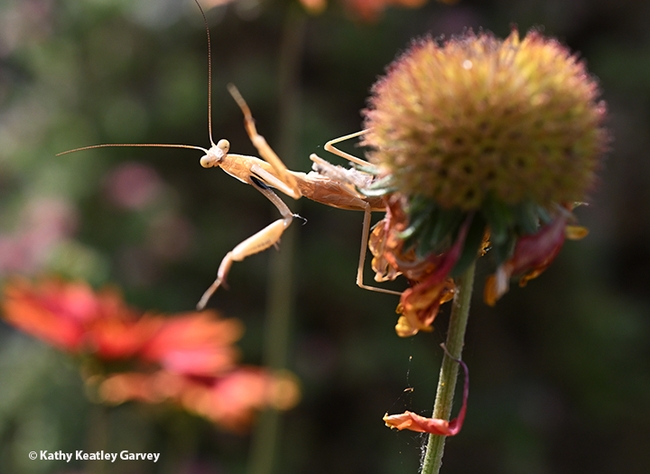
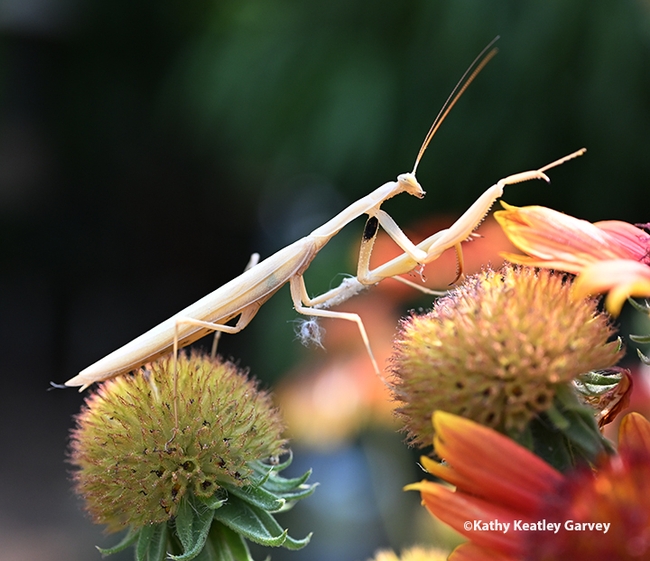

- Author: Kathy Keatley Garvey
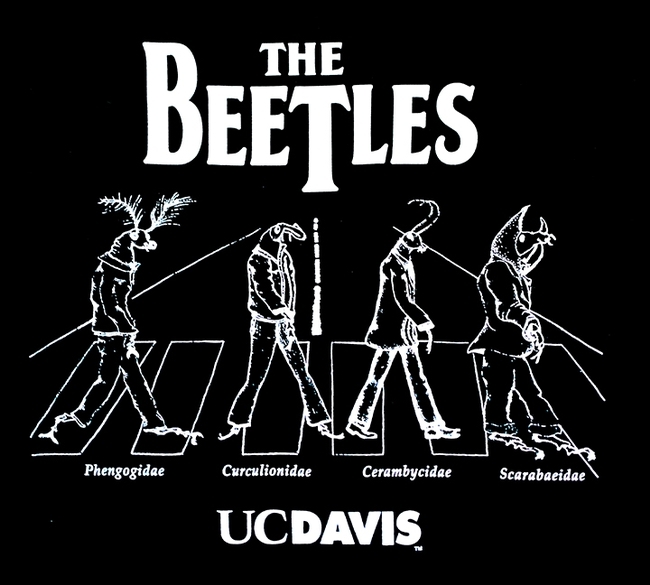
Born in Tonbridge, England, but a resident of Canada since 1945, Jeremy received his bachelor's degree in zoology, with honors, from the University of Western Ontario in 1969, and his doctorate in entomology and ecology from North Carolina State University in 1972. He served as a professor at Western Ontario from 2004 until his death.
"Jeremy died as he lived, tenacious and determined to the last--qualities that served him well as he blazed a trail through life," according to his obituary in Legacy.com. "He was recognised internationally as an eminent research scientist, publishing hundreds of papers, holding many positions of distinction and receiving countless accolades and awards. These include, among many others, President of the Royal Society of Canada, the Humboldt Research Fellowship in Germany, and the Order of Canada for his services to education. He was a passionate and enthusiastic educator his whole life, an ambassador equally at ease with everyone from VIPs to children."
"He received several national awards for his outreach activities, often saying the publication that he was most proud of was What is an Insect?, a children's book he co-wrote with Let's Talk Science which has been translated into five languages, and is used as a teaching aid in schools across Canada."
The professor, fondly nicknamed "The Bug Man," treasured his 500 (plus) insect-themed T-shirts, his favorite attire. One of them was "The Beetles," the all-time best seller designed and sold by the UC Davis Entomology Graduate Student Association. Mimicking The Beatles (George Harrison, Paul McCartney, Ringo Starr and John Lennon) crossing Abbey Road in a single file, the t-shirt depicts four beetles sauntering across the road. Beneath each beetle image is the family name: Phengogidae, Curculionidae, Cerambycidae and Scarabaeidae. Think glowworm beetles, snout beetles, long-horned beetles and scarab beetles.
"If you look closely," we wrote in a Bug Squad blog posted Dec. 4, 2023, "these UC Davis beetles are all wearing clothes--maybe designer clothes designed just for them? Three are barefoot, and one, the long-horned beetle, is wearing shoes. EGSA records don't indicate who designed The Beetles, but it's a keeper. It never fails to draw smiles. (EGSA sells this t-shirt and others at https://ucdavisentgrad.square.site.)
But back to Jeremy O'Neil and his love of insect-themed T-shirts. On July 26, his friend and colleague, UC Davis distinguished professor Walter Leal, recently elected a member of the National Academy of Sciences, posted an image on X (formerly Twitter) of McNeil wearing his UC Davis Beetles T-shirt. "Jeremy McNeil (Nov. 20, 1944 – July 18, 2024) had 500+ entomology-themed T-shirts, but this is--without a doubt--the number one! I am slightly biased because I like beetles in the family Scarabaeidae, not because I'm a @ucdavis faculty of course."
According to Legacy.com, all of McNeil's t-shirts will be "catalogued and sold to raise money for charity."
Jeremy Nichol McNeil would have loved that--but maybe not quite as much as he loved entomology and inspiring others to learn about insect science.
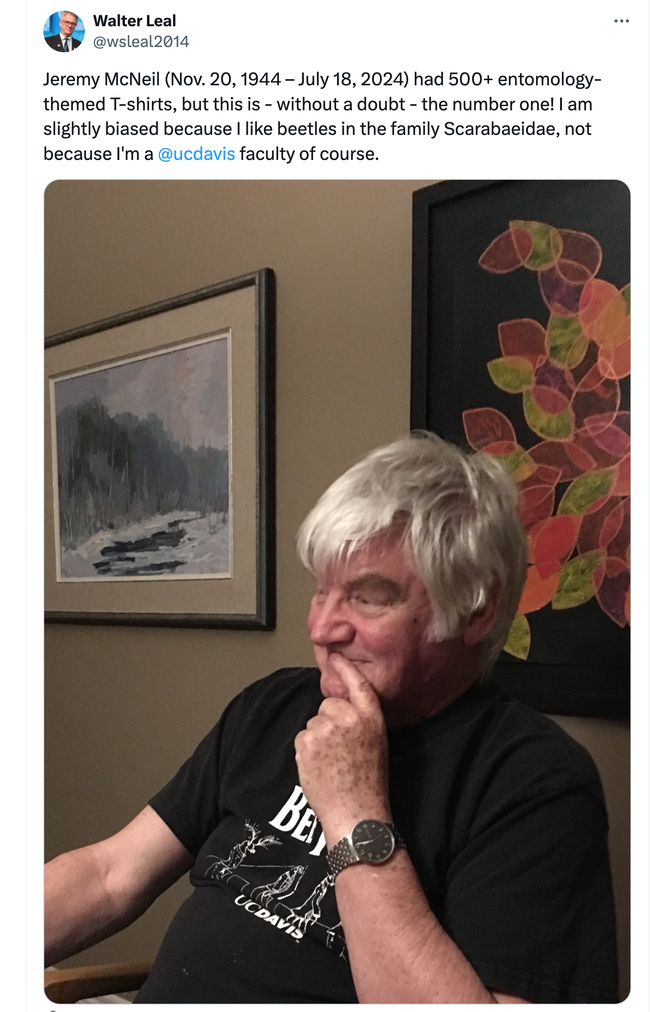
- Author: Kathy Keatley Garvey
The Vacaville Museum Guild's annual children's party--for Vacaville children ages 3 to 9--promises to be a honey of a party.
Themed "Fun on the Farm," it's an entertaining and educational event set for 10 a.m. to 12:30 p.m., Thursday, Aug. 8 in the museum courtyard, 213 Buck Ave.,Vacaville.
Coordinators Pamela King and Diana McLaughlin said the children's party will include a walk-around Queen Bee handing out honey sticks, and a real "Queen Bee"--Ettamarie Peterson of Petaluma, known as the Queen Bee of Sonoma, who will display a bee observation hive. Another Queen Bee, Amina Harris, has donated honey sticks.
The event also will include 4-H animals, a walk-around Mother Goose, face-painting, and a ring toss with a hobby horse named Trigger. The youngsters will create sand art jars, craft paper crowns, plant seeds in a take-home container, and pose for photos behind a UC Davis Bohart Museum of Entomology California dogface butterfly cutout banner. The menu, free with the $3 admission, includes hot dogs, popcorn, chips, cookies and water. Tickets can be purchased only at the museum on Thursdays through Saturdays between 1 p.m. and 4:30 p.m.
Capsule information:
Ettamarie Peterson. She's a retired teacher, a longtime beekeeper, a 4-H beekeeping leader and a great-grandmother who loves to talk about bees and show her bee observation hive at schools and special events. She'll point out the queen bee, worker bees and drones and discuss their roles. “I started beekeeping before I retired in 1998 from 37 years of teaching,” Peterson says. She has served as president and treasurer of the Sonoma County Beekeepers' Association (SCBA) and edits the SCBA newsletter, The Monthly Extractor. She collects swarms for her Liberty 4-H Club beekeepers. "I got involved in 4-H when my son wanted his daughters to learn how to keep bees. They are both parents now so I am hoping to teach the three great-grandsons, too!"
Peterson is also a longtime friend and supporter of UC Davis. She delivered a tribute to the late Eric Mussen (1946-2022), a 38-year California Cooperative Extension apiculturist and member of the Department of Entomology and Nematology faculty.
Queen Bee Costume. The queen bee costume is from the UC Davis-based California Master Beekeeper Program (CAMBP), founded and directed by apiculturist/bee scientist Elina Lastro Niño, associate professor of UC Cooperative Extension, and a member of the faculty of the Department of Entomology and Nematology. CAMBP is "a continuous train-the-trainer effort," the website explains. "The CAMBP's vision is to certify Honey Bee Ambassador, Apprentice, Journey, and Master level beekeepers so they can effectively communicate the importance of honey bees and other pollinators within their communities, serve as mentors for other beekeepers, and become the informational conduit between the beekeeping communities throughout the state and UCCE (UC Cooperative Extension) staff." Program managers are Wendy Mather and Kian Nikzad.
Honey Sticks. The wildflower honey sticks were donated by Amina Harris, founding director of the UC Davis Honey and Pollination Center who retired last year to return to her family business, Z Food Specialty and The HIVE, 1221 Harter Ave, Woodland. The Hive is known as the largest honey and mead tasting room in California and is newly featured in Travel and Leisure. A community gathering place, The Hive "aims to educate and engage visitors in varietal honeys, mead, honey bees, and pollinators." A honey-inspired menu features local and seasonal farm-to-fork foods. A pollinator garden and musical presentations are also draws. Amina's husband, Ishai Zeldner (he passed in 2018 at age 71), founded the business. Amina serves as the Queen Bee; son, Josh Zeldner is the nectar director, and daughter, Shoshana Zeldner, is the director of brand strategy. See more about the family and its business here.
Be a Butterfly. Attendees will pose for pictures behind the cut-out California dogface butterfly banner from the Bohart Museum. They also will see Bohart associate Greg Kareofelas' macro images of the egg, caterpillar, chrysalis and adult. The California dogface butterfly, Zerene eurydice, is the state insect, as designated by State Legislature in 1972. The butterfly is found only in California from the foothills of the Sierra Nevada to the Coast Ranges and from Sonoma south to San Diego. Its habitat also includes Gates Canyon, Vacaville. The male butterfly, which sports a yellow silhouette of a dog's head on its wings, is known as "the flying pansy." The female is mostly solid yellow except for a single black spot on its upper wings.
